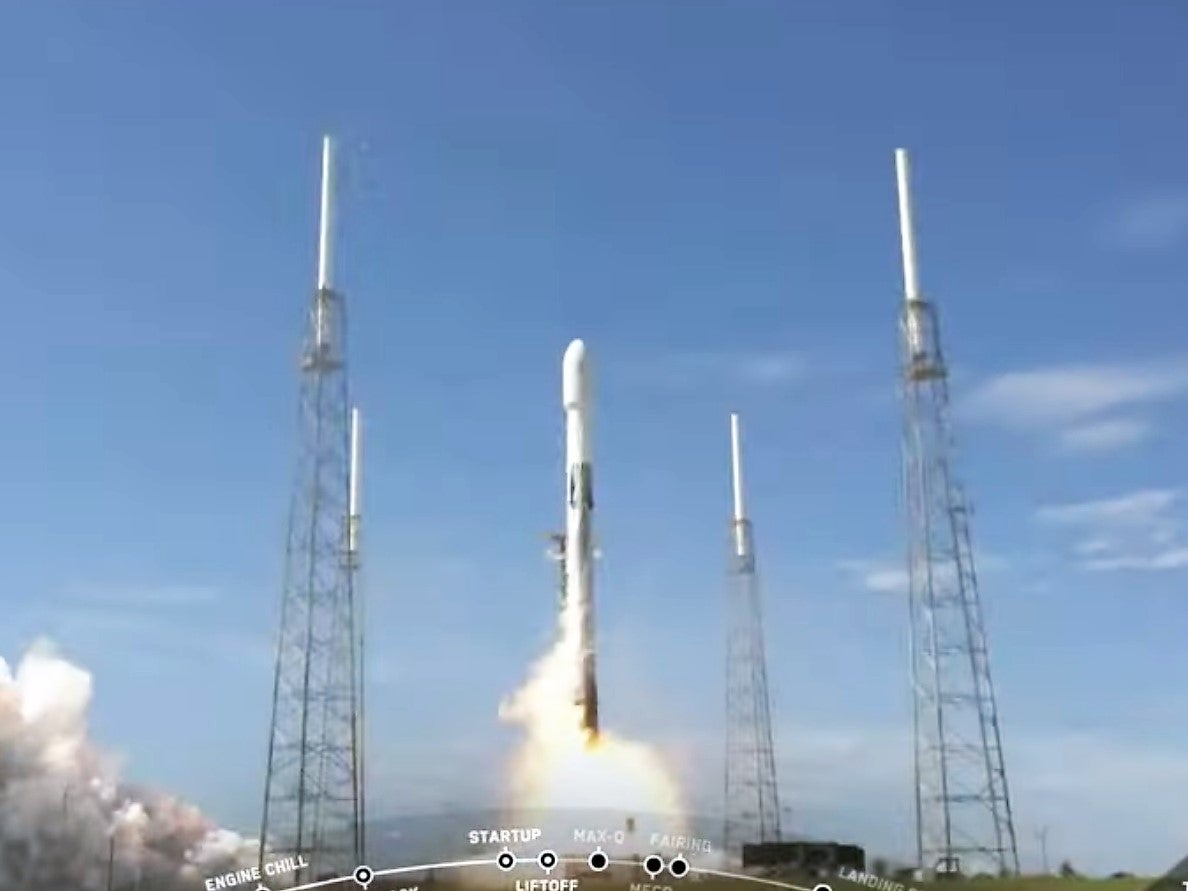
The failed launch from Cape Canaveral in Florida comes just four days after the 14th batch of Starlink satellites were successfully deployed to low-Earth orbit.
Such a rapid launch schedule is made possible by SpaceX’s pioneering Falco9 9 rockets, which are capable of landing after lift-off so they can be reused at a later date.
“Standing down from today’s launch of Starlink to allow additional time for mission assurance work,” SpaceX tweeted.
“Will announce next launch opportunity once confirmed on the Range.”
SpaceX CEO Elon Musk added: “Just a small-seeming issue with loss of upper stage camera. Probably nothing serious, but standing down to re-examine whole vehicle just in case.”
Thursday’s launch of 60 satellites would have grown the Starlink constellation to over 850.
The network is already rolling out to a limited number of users in Canada and the United States, with plans to eventually deliver high-speed broadband to 99 per cent of the populated world.
Early testers include emergency service workers in Washington State, who hooked up a satellite to connect to the network in order to provide a WiFi hub to residents in the town of Malden, which had been mostly destroyed by wildfires in September.
